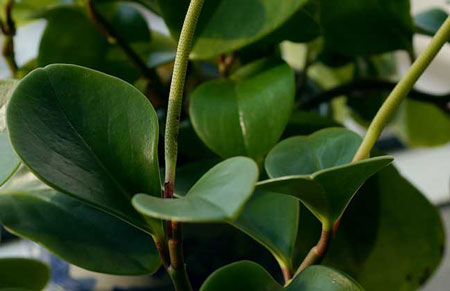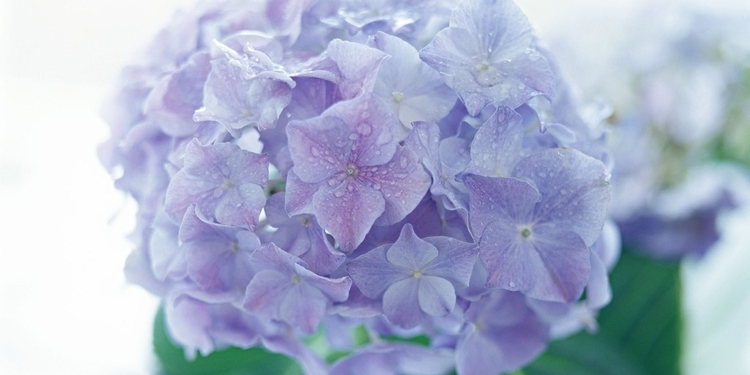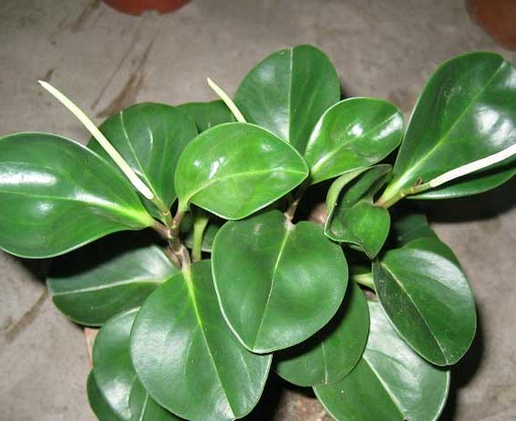Culture method of potted Jasper
Jasper belongs to Araliaceae and Illicium. It is a perennial evergreen herb. The plant is about 20 cm tall, the stem is round, often branched, light green with purplish brown markings. Leaves alternate, fleshy, glossy on both sides, long oval, with short stalks. Spikes, florets green-white. Horticultural varieties have flowers and leaves of Jasper, light green stems and dark red markings. The leaves are surrounded by maculae and then turn pale white. The central part of the leaf is light green with light white markings. There are great differences in markings among different plants.
Jasper is a large genus of Piperaceae. It is known that there are more than 1000 species, all of which are distributed in tropics and subtropics. Stemless Jasper type of watermelon peel grass, also known as watermelon peel, the markings on the leaves like the outer skin of watermelon, with deep and shallow stripes, very three-dimensional, hence the name. The plant is 15cm to 20cm tall, leaves fascicled and almost stemless. Leaves round shield-shaped, green mixed with dark green or silver veins, petiole slender, red, glossy leaf surface, leaf back is red. Spikes consisting of numerous florets.
Jasper attributes like warm, moist air and semi-overcast environment. The suitable temperature for growth is about 25 ℃, and the room temperature in winter is 10-15 ℃, not less than 10 ℃. Culture soil rich in humus, loose, fertile and well drained is required.
Cuttings are usually used to propagate. Can be cut into branches or leaves. From April to July, the top branches were selected to grow strong, about 7 cm long, and the leaves were inserted in river sand or vermiculite for 28 ℃. The left and right sides and the environment are moist, and they will soon take root. Cut the growing and full leaves, with petiole about 3 cm long, insert 2 cm into vermiculite or washed river sand, keep the best part of the matrix, not too wet, and take root for about 3 weeks. After 50 days of careful management and protection, several clusters of young plants germinated and were planted when the young plants grew and formed. It can also be propagated separately and operated in combination with turning pots and changing scholars in spring.
The plants of the genus Jasper are naturally strong and easy to cultivate. Pot soil requires loose and good permeability, which can be prepared with rotten leaf soil, peat soil and river sand. Long summer is suitable for indoor scattered light. Excessive light is disadvantageous to plant growth, but it should not cause leaf veins to fade. It is advisable to have enough light when the temperature is low in winter. During the growth period, the demand for water is slightly less than that of ordinary high-temperature plants, and thin liquid fertilizer can be applied every half a month. Usually watering to keep the basin soil moderately moist, when the air is dry, you can spray water or spray to the leaf surface. Pay attention to ventilation in the hot and humid season, the basin soil should not be wet for a long time, in case the leaves appear ugly markings, or even blacken and rot.
Culture methods and matters needing attention of potted plant Jasper

Jasper scientific name is Douban Green, alias watercress, Douban Ruyi, etc., for the Piperaceae grass Pepper herbs, stem creeping, multi-branched, can be potted ornamental, but also has medicinal value, internal treatment of rheumatoid arthritis, bronchitis, external application to treat sprains, carbuncle, boils and so on, let's take a look at Jasper's breeding methods and matters needing attention!
The growing environment of Jasper
Jasper was born on wet stone or dead trees, like warm and humid semi-shady environment, the suitable temperature for growth is about 25 ℃, the lowest can not be less than 10 ℃, can not bear high temperature, requires high air humidity, avoid direct sunlight, like loose, fertile, well-drained moist soil. It is distributed in Taiwan, Fujian, Guangdong, Guangxi, Guizhou, Yunnan, Sichuan, southern Gansu and southern Xizang, and abroad in America, Oceania, Africa and tropical and subtropical Asia.
The breeding method of Jasper
Jasper is often propagated by cutting and dividing plants. The top branches of the cuttings are selected from April to May, the cuttings are about 5 cm long, and the upper part retains 1 or 2 leaves. After the cut is dried, it is inserted into the wet sand bed. You can also insert leaves, cut the leaves with petioles with a knife, dry them slightly, then insert them obliquely on the sand bed, and take root in 10-15 days. In a greenhouse with temperature control equipment, it can be carried out all year round. Ramets are mainly used for the reproduction of colored leaf varieties.
Culture method of Jasper
1. Soil: Jasper likes to grow in loose and fertile sandy soil with good drainage and rich in humus, and its growth potential is poor in clay. Generally, the substrate can be mixed with rotten leaf soil, river sand and a small amount of mature organic fertilizer, and peat soil and perlite can be mixed under certain conditions.
2. Lighting: Jasper likes semi-overcast or scattered light, except for sufficient light in winter, shading is needed in other seasons, especially in summer. If placed in a shady environment, it is easy to grow, the branches grow, and the ornamental is reduced, which is not advisable. Under the semi-overcast condition, the leaf color is brighter and the gloss is better, especially the variegated leaf variety, the demand for sunlight is a little higher.
3. Temperature: Jasper likes warm environment, the suitable temperature for growth is between 20 and 30 ℃, the overwintering temperature is better kept above 10 ℃, the growth stops below 10 ℃, and it is easy to freeze under 5 ℃.
4. Humidity: Jasper likes the humid growth environment, grows luxuriantly in the humid environment, the leaf color is bright, and the foliar spray should be strengthened or sprinkled in the growing environment when the temperature is high or the air is dry, so as to maintain high air humidity, which is extremely beneficial to the growth of plants. It can also adapt to a short dry environment, but not for a long time, generally should be kept at about 70%.
5. Watering: Jasper prefers water and is not resistant to drought. It should be watered frequently during the growing period, and more water should be watered when the temperature is higher than 25 ℃ or when the air is dry, but it should also be prevented from waterlogging. When the temperature is lower than 25 ℃, it should be watered thoroughly when the surface of the basin soil is dry. When the temperature is less than 10 ℃, it can be dried for several days without watering.
6. Fertilization: a small amount of fertilizer is needed when the temperature is higher than 18 ℃, and less or not when the temperature is lower than 18 ℃ or higher than 30 ℃. Fertilization should be carried out in a small amount and many times, and diluted fertilizer solution instead of clear water is the best. It is not resistant to raw fertilizer and thick fertilizer, and it is easy to cause fertilizer damage. Foliar spraying fertilizer solution can also be used for fertilization, and the effect is good. Fertilizers are mainly nitrogen fertilizer and potassium fertilizer, followed by phosphate fertilizer.
7. Pruning: Jasper's newly propagated seedlings will pick the heart to increase the number of branches when the seedling height is about 10 centimeters, so that the plant type is fuller and the appreciation value is higher. The pruning of large plants is generally determined according to the growth trend, short cut and long branches, which can be used as cutting material, easy to take root, can be planted in clean river sand or vermiculite, or directly in sandy soil.
How to cultivate potted Jasper? the breeding method of Jasper
Jasper, also known as Douban Green, watercress, Douban Ruyi, etc., is an herbaceous plant of the family Piperaceae. it is often cultivated in white plastic pots and white porcelain pots on coffee tables, decorative cabinets, ancient shelves, and desks. or any branches spread and hang in front of the indoor window or bathroom, which has a certain purification effect on formaldehyde, xylene, secondhand smoke and so on. Let's take a look at how to raise potted Jasper.
Growth habits of Jasper
Jasper originated in the West Indies, Panama, northern South America, and then introduced to China, is now produced in Taiwan, Fujian, Guangdong, Guangxi, Guizhou, Yunnan, Sichuan and southern Gansu and southern Xizang and other places, like warm and humid environment, growth temperature about 25 ℃, the lowest not less than 10 ℃, not resistant to high temperature, higher air humidity, avoid direct sunlight, like loose fertile, moist soil with good drainage.
The breeding method of Jasper
Jasper is often propagated by cutting and dividing plants. The top branches of the cuttings are selected from April to May, the cuttings are about 5 cm long, and the upper part retains 1 or 2 leaves. After the cut is dried, it is inserted into the wet sand bed. Jasper can also be inserted into leaves, cut the leaves with petioles with a knife, dry them slightly, then insert them obliquely on the sand bed, and take root in 10-15 days. In the greenhouse with temperature control equipment, it can be carried out all the year round, and the ramet is mainly used for the reproduction of colored leaf varieties.
How to raise potted Jasper?
1. Soil: Jasper likes to grow in sandy soil that is loose and fertile, well drained and rich in humus, and is not suitable for growing in clay, so the matrix is usually mixed with rotten leaf soil, river sand and a small amount of mature organic fertilizer. a better substrate can be cultivated with optional peat soil and perlite.
2. Watering: Jasper prefers water and is not resistant to drought. It should be watered frequently during the growing period, and more water should be watered when the temperature is higher than 25 ℃ or Kongqi is dry, but it should also be prevented from waterlogging. When the temperature is below 25 ℃, the basin soil surface should be watered thoroughly when the temperature is less than 10 ℃. It can be dried for several days without watering.
3. Humidity: Jasper likes the moist growth environment, grows luxuriantly in the humid environment, and has bright leaves. When the temperature is high or Kongqi is dry, it is necessary to strengthen foliar spraying or sprinkle water in the growing environment to maintain high humidity of Kongqi, which is extremely beneficial to the growth of plants. It can also adapt to a short dry environment, but not for a long time, generally should be kept at about 70%.
4. Temperature: Jasper likes warm environment, the suitable temperature for growth is between 20 and 30 ℃, the overwintering temperature is better kept above 10 ℃, the growth stops below 10 ℃, and it is easy to freeze under 5 ℃. The change of temperature directly affects the color of leaves. The optimum temperature of colored leaves in winter is 18 ~ 20 ℃, and that of green leaves is about 15 ℃. If you are afraid of heat in hot summer, you can spray water under the shade to cool down, but it should be noted that overheating and humidity will cause stems and leaves to blacken and rot.
5. Lighting: Jasper likes semi-overcast or scattered light, except for sufficient light in winter, shading is needed in other seasons, especially in summer. If placed in a shady environment, it is easy to grow, grow between branches, and reduce ornamental, which is not advisable. Under the semi-overcast condition, the leaf color is brighter and the gloss is better, and the special variegated leaf variety has a slightly higher demand for sunlight.
6. Fertilization: Jasper needs a small amount of fertilizer when the temperature is higher than 18 ℃, less or no application when the temperature is lower than 18 ℃ or higher than 30 ℃, fertilization had better be carried out a few times, diluted fertilizer solution instead of clear water irrigation is the best, it is not tolerant to raw fertilizer and thick fertilizer, and it is easy to cause fertilizer damage. Foliar spraying fertilizer solution can also be used for fertilization, and the effect is good. Fertilizers are mainly nitrogen fertilizer and potassium fertilizer, followed by phosphate fertilizer.
7. Pruning: Jasper has strong branching ability and grows rapidly. usually, we should pay attention to pruning, cutting off the branches that are too high and too dense, which can not only improve the air circulation between branches and stems, but also keep the plant shape beautiful. For newly propagated seedlings, it is necessary to pick the heart to increase the number of branches in the seedling height of about 10 centimeters, and the pruning of large plants is generally determined according to the growth.
Points for attention of Jasper
1. Jasper has fewer diseases and insect pests, and the general diseases are caused by improper nursing and environmental discomfort, which can be gradually recovered after adjustment. The pests are mainly harmed by red spiders, but they can be prevented when keeping high humidity. When they occur, they can be prevented by wiping leaves with wet cloth or spraying special pesticides.
2. Jasper aquaculture in summer should strengthen air convection so that the temperature in its body can be released, put it in semi-shade, or shade it by 50%. At the same time, spray properly, 2-3 times a day.
3. Jasper should move to a brightly lit place for maintenance when breeding in winter, and wrap it with a film outside for the winter, but uncover the film every two days when the temperature is high at noon and let it breathe.
4. Jasper has many requirements for fertilizer and water, but she is most afraid of random fertilization, concentrated fertilizer and partial application of nitrogen, phosphorus and potash fertilizer. It is required to follow the principle of "frequent application of light fertilizer, less and more times, and complete nutrition".
5. Jasper is afraid of bright light, so she needs to keep it in the semi-shade or give it 70% shade. For indoor maintenance, put it in a brightly lit place as far as possible, and move to outdoor semi-shade or shade every one or two months, so that it can accumulate nutrients and restore its growth.
- Prev

Propagation method of Hydrangea
Like a warm, humid and semi-shady environment. It is suitable for slightly clayey soil which is fertile, rich in humus and well drained, and the suitable soil pH value is 4.0-4.5. 1. Propagation methods (1) ramet propagation should be carried out before germination in early spring, which can be combined with changing pots to separate the sprouting seedlings from the roots.
- Next

How does Jasper breed?
Jasper is a shady foliage plant, in addition to green leaf Jasper, there are flower and leaf Jasper, red edge Jasper, tricolor Jasper and other varieties. Suitable for small and medium-sized potted plants, it is an excellent plant to decorate the room. Propagation is often done by cuttings and ramets. Ramet should be carried out from April to May when the basin is changed. Branch cutting
Related
- Fuxing push coffee new agricultural production and marketing class: lack of small-scale processing plants
- Jujube rice field leisure farm deep ploughing Yilan for five years to create a space for organic food and play
- Nongyu Farm-A trial of organic papaya for brave women with advanced technology
- Four points for attention in the prevention and control of diseases and insect pests of edible fungi
- How to add nutrient solution to Edible Fungi
- Is there any good way to control edible fungus mites?
- Open Inoculation Technology of Edible Fungi
- Is there any clever way to use fertilizer for edible fungus in winter?
- What agents are used to kill the pathogens of edible fungi in the mushroom shed?
- Rapid drying of Edible Fungi

